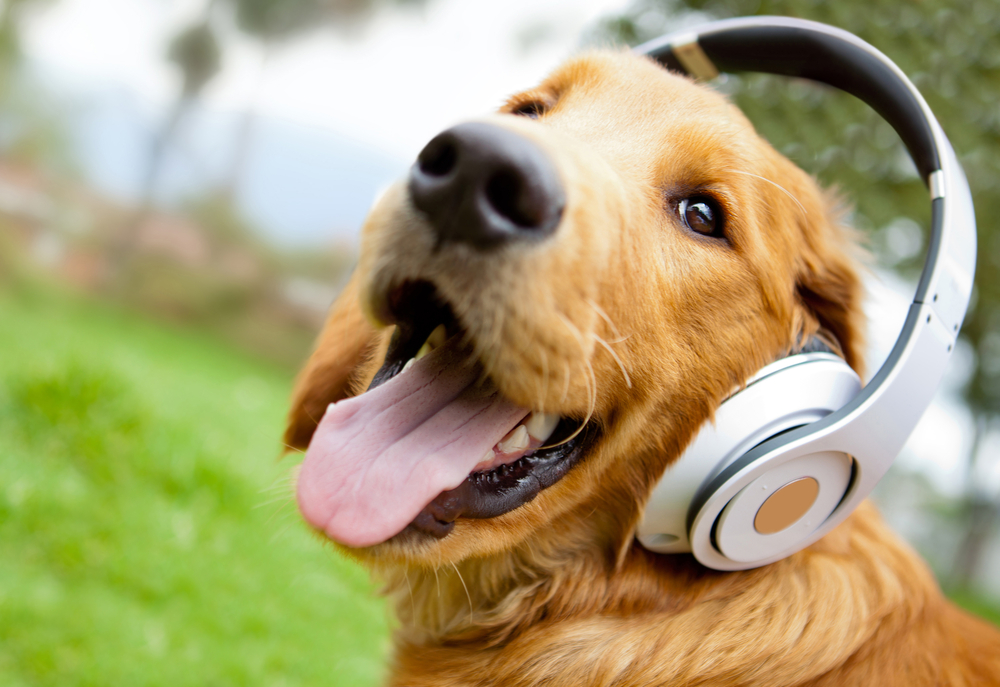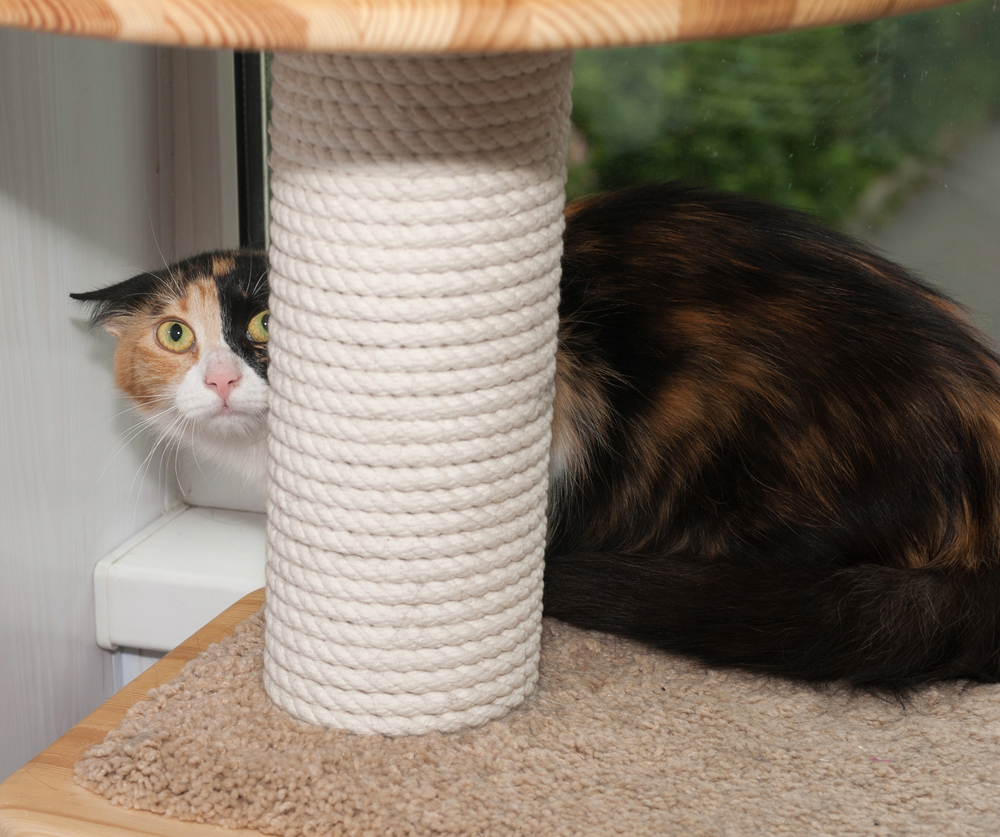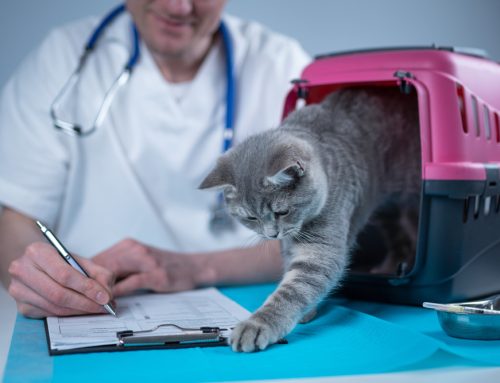Does your pet panic when they hear a loud, irritating, or sudden sound? Noise aversion (i.e., sound sensitivity or noise anxiety) is a common but frequently underdiagnosed condition that can affect dogs and, less commonly, cats. Left untreated, what starts as occasional nervousness or jumpy behavior can progress into severe and crippling anxiety.
Fortunately, early recognition, diagnosis, and therapeutic intervention at Veterinary Behavior Solutions can ease your pet’s worry and prevent long-lasting damage to their emotional or physical health.
Ear prick versus panic attack: How your pet responds to sounds
Unless your pet suffers from hearing loss, when they hear a sudden or unexpected noise, they should startle or react. Such reflexive and defensive behavior is part of their sympathetic nervous system response (i.e., fight or flight) and could keep them alive during real danger. Typically, the pet returns to their baseline (i.e., normal) behavior as soon as they realize no threat is imminent.
However, a noise-averse pet who hears a concerning sound experiences a severe or dramatic overreaction, similar to a human panic attack. Affected pets’ heart and respiratory rates may increase, and their blood pressure may spike. Most concerning is that frightened pets may attempt to flee their homes or confinement, resulting in property damage, serious injury, or death (e.g., from being hit by a car or falling from a height, such as an open window).
While healthy pets quickly return to baseline after a sudden noise, emotionally distressed pets may take hours or days to completely recover.
What’s wrong? Recognizing noise aversion in pets
Pets with severe noise aversion may display obvious signs, such as shaking, hiding, or attempting to flee. However, many pets experience lower-grade anxiety and show only subtle signs. Recognizing and addressing noise aversion in its earliest and mildest stage is key for minimizing your pet’s distress.
Common signs to watch for include:
- Frequent lip-licking or yawning
- Drooling
- Cowering
- Freezing
- Trembling or shaking
- Pacing or restlessness
- Hiding
- Attention-seeking
- Frantic or destructive behavior (e.g., digging in an effort to escape)
- House soiling
- Vocalizing
- Loss of appetite
- Attempted or successful escape
What did you hear? Common noise triggers for pets
Although most pet owners think of triggers as loud environmental noises, such as fireworks and thunder, pets can be affected by everyday sounds, such as:
- Fireworks
- Gunfire
- Thunder
- Trash trucks
- Construction equipment
- Loud music or social gatherings
- Sporting events
- Beeping (e.g., back up alerts, security alarms, smoke detectors)
- Electronic sounds
- Appliances
Identifying your pet’s triggers can help you minimize their exposure. Then, your Veterinary Behavior Solutions veterinarian can help you design and implement an effective management plan.
Creating calm in the chaos: Four ways to ease your pet’s distress
Noise aversion doesn’t go away with age or time and instead typically will intensify and progress to generalized anxiety disorder. Early intervention is the best way to reduce this risk and help your pet cope with their noisy world.
The best noise-aversion therapies involve a multifaceted treatment plan that addresses the pet’s environment, neurological response, and behavior. Effective therapies can be combined to provide short- and long-term solutions, and to relieve your pet during expected and unexpected noise events (e.g., scheduled home renovation versus a pop-up summer thunderstorm).
Your pet’s tailored treatment plan may include:
- Safe space — Noise-averse pets need a safe and secure place to stay during long-duration noise events (e.g., storms, fireworks, social gatherings). Select a low-traffic area in your home away from windows and exterior doors. If a small room isn’t available, use a covered crate.
- Sensory comfort — Calm your pet’s nerves with pleasing sensory stimulation from anti-anxiety body wraps, pheromone sprays or collars (e.g., Adaptil or Feliway), and white noise or classical music. Close any blinds or curtains to block visual stimuli, such as lightning flashes or passing people.
- Medication — Moderate to severely affected pets often benefit from anxiety-reducing medications, such as trazodone or clomipramine. An oral mucosal (i.e., gum) gel available for dogs is the only current Food and Drug Administration (FDA)-approved medication for canine noise aversion. Unlike traditional tablets or capsule-based medication, the fast-acting gel can be administered when a noise event begins and still achieve desirable results.
- Exercise and soothing distractions — Regular physical exercise can reduce stress and anxiety in affected pets and may reduce their specific sound sensitivity. For example, lickable mats and food-stuffed hollow toys create a positive distraction and release natural and soothing endorphins during noise events.
Lasting relief: Long-term solutions for noise-averse pets

Medication and environmental management are a great way to provide short-term noise relief and prevent additional negative exposures, which may be sufficient for a mildly affected pet. However, dogs and cats with severe or progressive noise aversion require dedicated behavior modification (i.e., training).
Desensitization and counterconditioning (DS/CC) is a gradual retraining process in which your pet learns new and positive responses to previously upsetting sounds. DS/CC is a gradual and controlled training system that requires patience and close observation, but is the only way to effectively resolve noise aversion in pets. Your Veterinary Behavior Solutions veterinarian will oversee the DS/CC training process to ensure success.
Noise aversion in pets is more than mild agitation or fear. Affected pets are anxious and fearful, and at risk for worsening behavior disorders, self-harm, and a diminished quality of life. If your dog or cat is suffering from sound sensitivity, contact Veterinary Behavior Solutions to schedule a consultation.







Leave A Comment